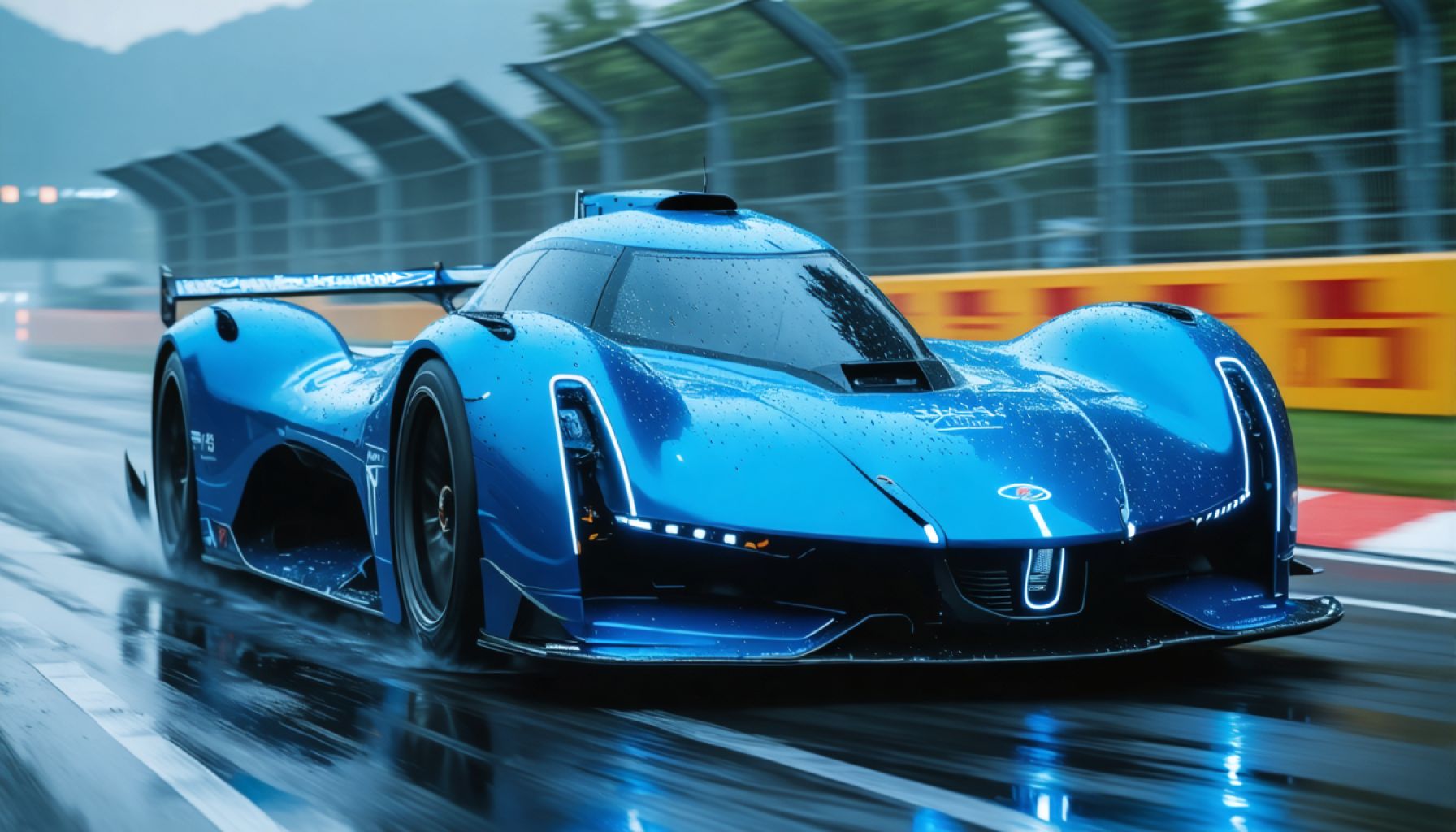- Tencent’s T1 model, built with large-scale reinforcement learning, challenges AI leaders like DeepSeek and OpenAI with impressive efficiency gains and competitive results.
- The groundbreaking T1 achieved an 87.2 score on the MMLU Pro benchmark, narrowly missing OpenAI’s top score, showcasing its high-level performance.
- T1’s efficiency relies on a hybrid architecture that merges Google’s Transformer and Mamba technologies, reducing memory use and training costs while boosting decoding speed by 200%.
- Investor interest continues in AI markets, with Marvell Technology spotlighted as a promising opportunity despite recent stock declines, backed by a growing AI data center sector potential.
- The AI landscape is ripe with advancements and investment opportunities, underscoring the transformative impact on industries as exemplified by Tencent and Marvell’s strategic developments.
The world of artificial intelligence is no longer an exclusive playground for startups and tech titans; it has evolved into a vibrant battleground where new contenders constantly vie for a competitive edge. Among these titans, one name has emerged with a model that is as audacious as it is innovative. Tencent, China’s digital behemoth, has now launched its latest creation: the T1 reasoning model. Like a master sculptor refining a masterpiece, Tencent has chipped away at the inefficiencies of past models, revealing a faster, smarter, and more resource-efficient entity poised to reshape the AI landscape.
Unveiling a Formidable Contender: Imagine the rush of a race car effortlessly navigating a winding track—this captures the essence of Tencent’s T1. With a sleek design powered by large-scale reinforcement learning, it shows impressive command over tasks, rivaling DeepSeek’s R1 and even giving OpenAI’s models a run for their money. In Tencent’s grand debut, their T1 scored an impressive 87.2 on the MMLU Pro benchmark, an elite test of AI prowess, narrowly falling short of OpenAI’s high mark of 89.3. Yet, the focus wasn’t just on the destination but the journey itself—how efficiency was achieved through Tencent’s ground-breaking hybrid architecture.
Picture a bustling workshop where two different technologies—Google’s Transformer and the academia-informed Mamba—collaborate harmoniously. This is the secret sauce in Tencent’s T1, crafted in the hallowed halls of Carnegie Mellon and Princeton. By combining these approaches, T1 not only reduces memory usage but dramatically lowers the cost of training and inference—offering a 200% boost in decoding speed. The result is an AI that not only thinks faster but is kinder to the resources it demands.
A Tale of Strategic Investment: Shifting our gaze to the investor’s horizon—here, the savvy investor knows that the wisdom of the crowd, particularly hedge funds, often hides gems within its depths. Take Marvell Technology, Inc. (NASDAQ:MRVL), a semiconductor leader, as a prime example. Although its shares have seen better days, slumping 37% this year, the underlying melody of growth beats steadily. Recent endorsements from Bank of America highlight a “buy” opportunity, with optimistic projections for the AI-driven data center market—a sector with a tantalizing $100 billion addressable market.
Yet, with bold ambitions comes the reminder that even among giants like Marvell, the AI arena is teeming with opportunities waiting to be seized. This reality echoes in the consistent beat of our quarterly strategy—it identifies 14 stocks each quarter, harnessing the wisdom of top hedge funds to delight in market-beating returns since its inception.
The Win-Win Scenario: As the dust settles, both Tencent’s innovation and Marvell’s ambitious strides underline the inexorable march of artificial intelligence as it reshapes industries—and indeed, our very futures. The takeaway for keen observers and investors alike is clear: whether you’re captivated by cutting-edge tech epics or the promise of smart investment strategies, the world of AI is brimming with potential riches and daring adventures. As Tencent’s T1 model carves its place in history, remember that the race is as much about the journey as it is about the finish line.
Tencent T1 Model: A Game-Changer in AI Efficiency and Performance
Overview
Artificial intelligence, once the exclusive realm of startups and tech giants, is now a vibrant battleground with new contenders continually emerging. Among the giants, Tencent has unveiled the T1 reasoning model, an innovative evolution set to reshape the AI landscape. Let’s dive into the details of this cutting-edge development and understand its potential impact on the industry.
Key Features and Insights
Advanced Architectural Design
– Hybrid Architecture: Tencent’s T1 utilizes a hybrid approach combining Google’s Transformer technology with the Mamba architecture informed by Carnegie Mellon and Princeton research. This fusion enhances efficiency, reduces memory usage, and dramatically lowers the costs associated with training and inference.
– Performance Metrics: T1 scored an impressive 87.2 on the MMLU Pro benchmark, just short of OpenAI’s 89.3, demonstrating a competitive edge in large-scale reinforcement learning tasks.
Enhanced Efficiency
– Resource Optimization: By optimizing memory usage and speeding up processes, Tencent’s T1 model is not only faster but also cost-effective, offering a 200% boost in decoding speed compared to traditional models.
– Sustainability: The design focuses on reducing the environmental footprint of AI processes, a growing concern in technology development.
Market and Industry Trends
– AI Integration in Enterprises: As more companies integrate AI into their operations, models like T1 are crucial for maintaining competitiveness. Their enhanced speed and efficiency can drive significant ROI for businesses.
– AI-Driven Data Center Market: Companies like Marvell Technology see opportunities as AI continues to grow, especially in data centers with a projected $100 billion addressable market.
Real-World Use Cases
– Natural Language Processing (NLP): T1’s capabilities make it suitable for advanced NLP tasks, providing more accurate and responsive systems for customer service and virtual assistants.
– Predictive Analysis: Businesses can harness T1’s analytical capabilities for real-time data processing and predictive insights, offering a competitive advantage in decision-making.
Pros and Cons Overview
Pros
– High Efficiency: Reduced costs and enhanced speeds make T1 a valuable asset for AI operations.
– Environmental Impact: Lower energy usage contributes to sustainability goals.
Cons
– Competition: Despite its strengths, T1 faces stiff competition from established models like those from OpenAI and other tech companies.
– Market Penetration: Capturing market share amidst established players poses a challenge.
Actionable Tips
For Investors
1. Watch AI Trends: Keep an eye on AI developments and how they impact related markets, such as semiconductors.
2. Diversify Investments: Explore AI-related stocks, like Marvell Technology, which are poised to benefit from the sector’s growth.
For Tech Enthusiasts
1. Engage with New AI Models: Experiment with new models like Tencent’s T1 to understand their capabilities and limitations.
2. Join AI Communities: Stay updated on the latest trends and developments by engaging with AI forums and professional networks.
Conclusion
Tencent’s T1 model signifies a major advancement in AI, offering faster, more efficient, and sustainable solutions. Its hybrid architecture and competitive performance benchmarks position it as a formidable contender in the AI landscape. As technology continues to evolve, keeping abreast of such developments is crucial for investors and tech enthusiasts alike.
For more insights into technology developments and investment opportunities, visit Tencent and Marvell Technology.











